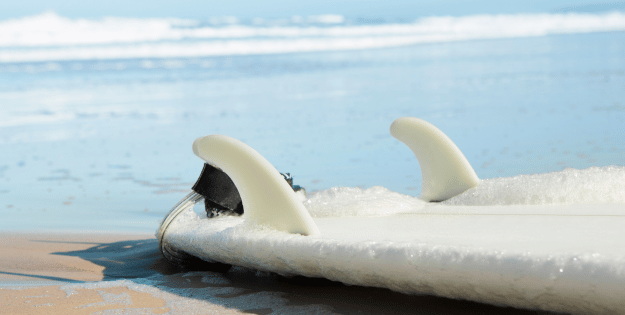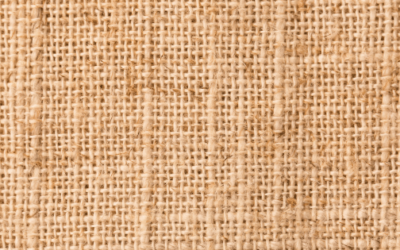Choosing the right surfboard fins can make or break your wave-riding experience. Whether you’re a seasoned pro or just starting out, understanding the different types of fins and their impact on your performance is crucial. With so many options available, it’s easy to feel overwhelmed.
This guide will help you navigate the world of surfboard fins, from single fins to quad setups. Discover how the right fins can enhance your speed, stability, and manoeuvrability, making every session in the water more enjoyable. Dive in and find the perfect fins to elevate your surfing game.
Top Amazon Sellers
Key Takeaways
- Importance of Choosing the Right Fins: Surfboard fins significantly impact your surfing performance by affecting speed, stability, and manoeuvrability.
- History and Evolution: The advancements from single fins in the 1930s to modern multi-fin configurations have revolutionised wave-riding, highlighting the necessity of selecting appropriate fins.
- Fin Technology and Materials: Modern fin designs and materials like fibreglass and carbon fibre enhance flexibility, strength, and overall efficiency in various water conditions.
- Types of Fins: Different fin types, such as glass-on, removable, hard, and flexible, cater to distinct surfing styles and conditions, offering unique benefits.
- Fin Setups: Various configurations—single, twin, thruster, quad, and 2+1 fin setups—provide specific advantages depending on wave conditions and surfer preferences.
- Selection Factors: Key considerations when choosing surfboard fins include fin size, base, depth, rake, cant, and material, ensuring the best match for your weight and surfing style.
Brief History of Surfboard Fins
Surfboard fins have significantly evolved since the early 20th century, changing the dynamics of wave-riding. Originally, surfboards lacked fins and were hard to manoeuvre, relying solely on the rider’s skill for control. Around the 1930s, the first single fin was introduced, providing riders with improved stability and directional control. This innovation allowed surfers to carve more precisely on waves.
In the 1960s, advancements continued with the development of twin fins, enhancing manoeuvrability and speed. By the 1980s, the tri-fin, or thruster configuration, became popular, offering a balance between stability and performance. Today, surfers have access to a variety of fin setups and designs, tailoring their boards to match specific wave conditions, ensuring the best surfboard fins for optimal performance. This evolution underscores the importance of choosing the right fin to enhance the surfing experience.
Understanding Surfboard Fin Technology
Modern surfboard fin technology plays a crucial role in enhancing performance. Improvements in design and materials have revolutionised surfing, providing advanced options for various conditions.
The Evolution of Fin Design
Fin design has transitioned from single fins to multi-fin configurations. The single fin in the 1930s enhanced stability. Twin fins in the 1960s improved speed and control. By the 1980s, the tri-fin setup offered a balanced performance, marking significant progress.
Advances in Fin Materials
Material innovation has led to fins that offer better flexibility and strength. Earlier wooden fins have been replaced by lighter, more durable composites. Today’s fins, often made of fibreglass and carbon fibre, maximise efficiency and responsiveness.
Types of Surfboard Fins
Selecting the best surfboard fins involves understanding various fin types and their impact on performance.
Glass-On Fins vs. Removable Fins
Glass-on fins are permanently fixed to the surfboard, offering rigidity and a solid connection. Removable fins, however, provide versatility, as they can be changed to suit different wave conditions. Choosing between these depends on whether the surfer prioritises a fixed setup or adaptability.
Hard Fins vs. Flexible Fins
Hard fins offer stability and hold in the water, making them suitable for high-speed surfing. Flexible fins provide manoeuvrability and fluid turns, catering to surfers seeking a dynamic and responsive ride. The choice hinges on the desired balance between stability and flexibility.
Fin Setups and Their Benefits
Different fin setups offer unique advantages. Depending on the wave conditions and a surfer’s style, selecting the best surfboard fins can significantly enhance performance.
Single Fin
A single fin setup offers excellent stability and control, making it ideal for straight-line speed and smooth, drawn-out turns. Surfers often prefer this setup for classic longboarding.
Twin Fin
The twin fin configuration enhances manoeuvrability and speed. This setup provides a looser feel, allowing for quick, fluid turns and a skate-like experience, favoured by many performance shortboard surfers.
Thruster Fin
A thruster fin setup balances stability and manoeuvrability. This three-fin configuration offers control and drive, making it one of the most versatile setups for various wave conditions and surfing styles.
Quad Fin
The quad fin setup maximises drive and speed, particularly in smaller waves. With no centre fin, it reduces drag and encourages tight turns. This configuration suits surfers seeking a fast and agile ride.
2+1 Fin Setup
The 2+1 fin setup combines the benefits of single and thruster configurations. This setup features a larger centre fin with two smaller side fins, offering stability for longboards while providing enhanced manoeuvrability.
Factors to Consider When Choosing Surfboard Fins
Selecting the best surfboard fins requires assessing various factors to ensure optimal performance and suitability for individual surfing needs.
Fin Size and Surfer’s Weight
Fin size impacts stability and drive. Larger fins offer more control but might reduce manoeuvrability. Surfer’s weight matters, as heavier surfers benefit from larger fins for better support, while lighter surfers can use smaller fins for agility.
Fin Base and Depth
The fin base affects drive and acceleration. A wider base provides better propulsion, helpful in powerful waves. Depth, or height of the fin, influences control; deeper fins enhance stability, especially when carving.
Fin Rake and Cant
Fin rake, or sweep, determines how far back the tip curves. More rake provides smoother, drawn-out turns, while less rake offers pivot for quick direction changes. Cant, the tilt of the fin, affects lift and responsiveness in turns.
Foil Types
Foil type refers to the fin’s cross-sectional shape. Symmetrical foils, seen on centre fins, offer balance. Asymmetrical foils on side fins enhance speed and lift, improving tracking and turning in various conditions.
Fin Construction Materials
Materials affect performance and durability. Composites like fibreglass and carbon fibre are common, offering strength and lightness. Plastic fins are less expensive but less responsive. Choosing the right material enhances wave interaction.
Recommended Surfboard Fins for Different Conditions
Selecting the right surfboard fins enhances performance in various wave conditions. Here’s a guide to the best surfboard fins for different scenarios.
All-Around Fins
All-around fins provide balanced stability, speed, and manoeuvrability, making them ideal for versatile surfing. Surfers appreciate their adaptability across diverse wave conditions, ensuring an enjoyable experience regardless of the environment.
High-Performance Fins
High-performance fins excel in delivering maximum speed and precision. These fins, designed for experienced surfers tackling challenging waves, enhance responsiveness and control. They offer the agility needed for advanced manoeuvres and high-speed turns.
Eco-Friendly Fins
Eco-friendly fins promote sustainability without compromising performance. Crafted from recycled or biodegradable materials, they offer a responsible choice for environmentally conscious surfers. These fins perform well in various conditions while reducing the ecological impact.
Conclusion and Top Picks
Choosing the right surfboard fins is crucial for enhancing your surfing experience. With a variety of options available, understanding the impact of different fin types and setups on performance can significantly improve your wave-riding skills. The evolution of fin technology, from wooden single fins to advanced multi-fin configurations, highlights the importance of selecting fins tailored to your specific needs and conditions.
Modern advancements in design and materials offer surfers the flexibility to optimise their boards for speed, stability, and manoeuvrability. Whether you’re a beginner or an experienced surfer, investing time in selecting the right fins can make a substantial difference in your performance and enjoyment on the waves. Remember to consider factors like fin size, base, depth, rake, and construction materials to find the perfect fins for your surfing style.
Frequently Asked Questions
How do I choose the right fins for my surfboard?
Selecting the right fins depends on several factors such as your surfing style, weight, and the types of waves you ride. Heavier surfers may prefer larger fins for better stability, while lighter surfers can go for smaller fins for increased manoeuvrability.
Do surfboard fins make a difference in performance?
Yes, fins significantly affect your surfboard’s performance. Larger fins offer better stability and control, especially in bigger waves, while smaller fins provide more manoeuvrability but less drive and hold.
What types of surfboard fins exist?
There are various fin types including single fins, twin fins, thrusters (three fins), quad fins, and 2+1 setups. Each type affects your board’s stability, speed, and manoeuvrability differently, catering to various surfing styles and conditions.
What is the advantage of removable surfboard fins?
Removable fins offer versatility as you can switch them out based on wave conditions. This flexibility allows you to customise your surfboard for optimal performance in different surfing scenarios.
How have surfboard fins evolved over time?
Initially, surfboards had no fins, making them hard to control. The introduction of single fins in the 1930s enhanced stability and control. Subsequent developments, such as twin and tri-fin setups, improved manoeuvrability and speed, leading to today’s advanced multi-fin configurations.
What modern materials are used in surfboard fins?
Modern surfboard fins are often made using lightweight and durable materials such as fibreglass, carbon fibre, and composites. These materials provide better flexibility, strength, and responsiveness compared to traditional wooden fins.
What fin setup is best for beginners?
Beginners may find a single fin setup or a thruster (tri-fin) configuration ideal. These setups offer good stability and control, making it easier to learn and master basic surfing techniques.
How does fin size impact surfing performance?
Larger fins provide greater stability and drive, making them ideal for bigger waves. Smaller fins offer more manoeuvrability and a looser feel but may lack control in larger waves.
What are high-performance fins?
High-performance fins are designed for experienced surfers who seek maximum speed and precision, particularly in challenging wave conditions. They often feature advanced materials and sophisticated designs to enhance performance.
Are there eco-friendly surfboard fins available?
Yes, eco-friendly fins made from recycled or biodegradable materials are available. These fins aim to provide high performance while reducing environmental impact, catering to surfers who prioritise sustainability.












